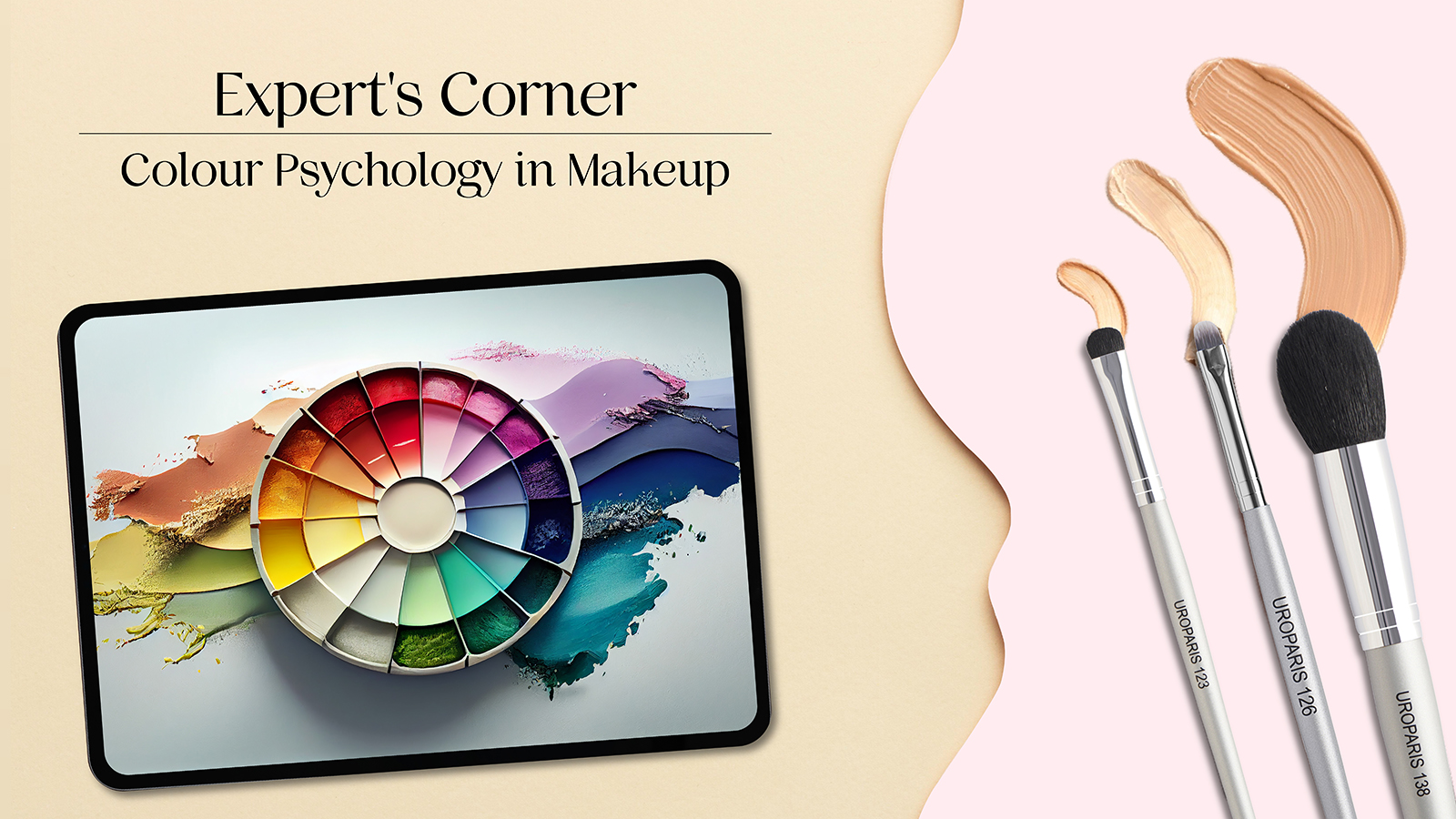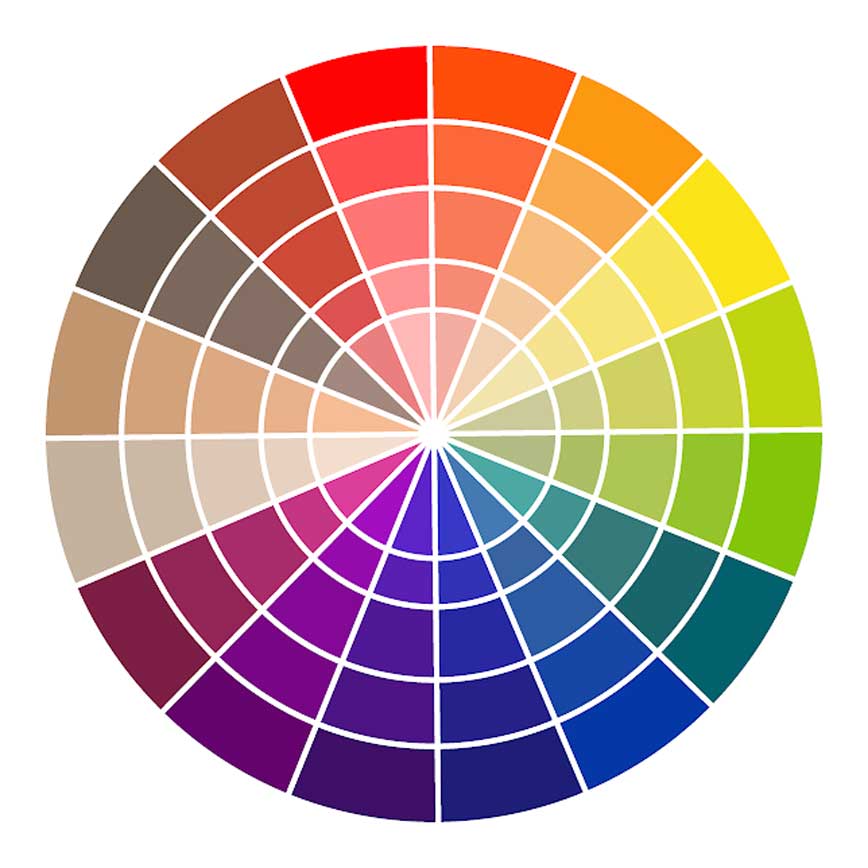Expert’s Corner: Colour Psychology in Makeup – Using Colours to Convey Emotion

Have you ever wondered how specific colours impact your overall vibe? It’s interesting how a red lip instantly exudes confidence, a nude-base ‘clean girl’ makeup evokes a sense of calmness, or the vamp of a daily soap has the most elaborate smoked-out heavy eyeshadow, whereas the protagonist carries a very blushed soft pink makeup look. Well, your answer lies in the colour psychology of makeup.
Understanding Colour Psychology in Makeup
To understand how colour can be used to evoke emotions, let’s first understand colour psychology. Simply put, colour psychology studies hues as a determinant of human behaviour. Colours have the ability to evoke specific feelings and create subconscious perception. For example, red often elicits feelings of passion and excitement, while blue tends to evoke calmness and serenity. These emotional responses can be both psychological and physiological, influencing mood, energy levels, and even decision-making.
Makeup has the power to evoke and express emotions in fun and impactful ways. For makeup artists, it’s crucial to understand colour psychology and use colours strategically to tap into the right emotional and aesthetic receptors.
Additionally, knowledge of colour psychology in makeup will allow you to create a harmonious and balanced look that complements a person’s skin tone and overall style. This understanding not only enhances the aesthetic and overall look of the makeup, but also ensures that the chosen colours align with your client’s emotional intent and the occasion.
The Emotional Impact of Colours in Makeup
The Power of Red: Passion and Energy
For decades, red has been considered more of a statement than just a colour. From classic fashionista Marilyn Monroe to new-age celebrities like Taylor Swift, all have aced the classic, bold red lip or eyeshadow. But have you ever wondered why red is associated with passion, energy, and confidence? It’s due to its vibrant and intense hue, which is often linked to love and desire.
Colour psychology says that red’s energy comes from its brightness and visibility, which can invigorate and stimulate the viewer’s mind. Experts claim that red enhances a person’s confidence and vitality, conveyed through the colour’s boldness, making anyone wearing red appear more assertive and self-assured.
The Cool Blues and Calming Greens
Blue and green are soothing colours in makeup, each with unique emotional associations. Blue symbolises calm, trust, and serenity. It’s often used in eyeshadows to create a tranquil look. The calming effect of blue is linked to its association with the sky and ocean, which evoke peace and stability. Green represents nature, freshness, and balance. It’s commonly used in eyeshadows for a fresh and vibrant appearance. Green’s connection to nature fosters a sense of renewal and harmony, leading to feelings of growth and equilibrium. Both colours offer a serene and refreshing effect in makeup.

The Old Money Neutrals
According to colour psychology, shades like beige, brown, and pink symbolise stability, sophistication, and reliability. These colours in makeup are ideal for everyday looks and professional settings. Their understated elegance conveys a sense of maturity and composure, making them perfect for creating a polished and refined appearance that screams old money and elegance.
Neutrals have a calming and grounding effect, often associated with earthiness and dependability. Their versatility allows them to easily blend with other colours, enhancing the overall appearance and stability of the look while ensuring that you appear confident and trustworthy.
The Blushing Pinks and Purples
Pink and purple each bring unique emotional associations to makeup. Pink symbolises romance, tenderness, and calmness, making it ideal for blushes and softer lip colours that create a youthful and gentle appearance. Its association with love and tranquillity evokes a sense of warmth and affection. Purple, on the other hand, is linked to royalty, luxury, and creativity. It’s often used in lipsticks and eyeshadows for a sophisticated look. Historically associated with nobility and wealth, purple’s rich and vibrant tones stimulate creativity and convey a sense of opulence and elegance.
Mastering Colour Psychology in Makeup: Practical Tips for Makeup Artists
Choosing the Right Colours:Select makeup colours based on the occasion, mood, and your client’s personal style. For instance, bold colours like red are suitable for evening events, to convey confidence. Softer tones like pink are ideal for romantic/day events.
Pro tip:
Understanding the emotional impact of colours will allow you to pick ones that match your clients’ wants.
Blending Colours:
Seamless blending of different colours can enhance the desired emotional impact. Combine complementary shades to create depth and dimension, ensuring a cohesive, harmonious look that enhances their natural features.
Staying Updated:
Stay ahead of current trends and clients’ personal preferences in colour choices. Following beauty influencers, reading makeup blogs, and experimenting with new shades can help you stay informed and continuously improve your makeup skills.






